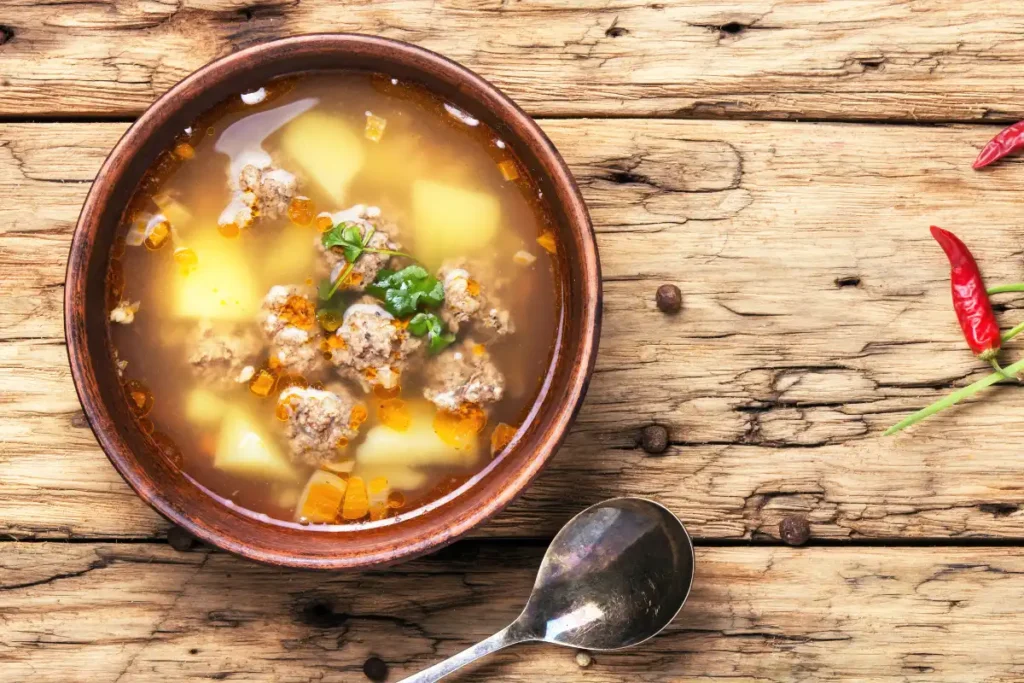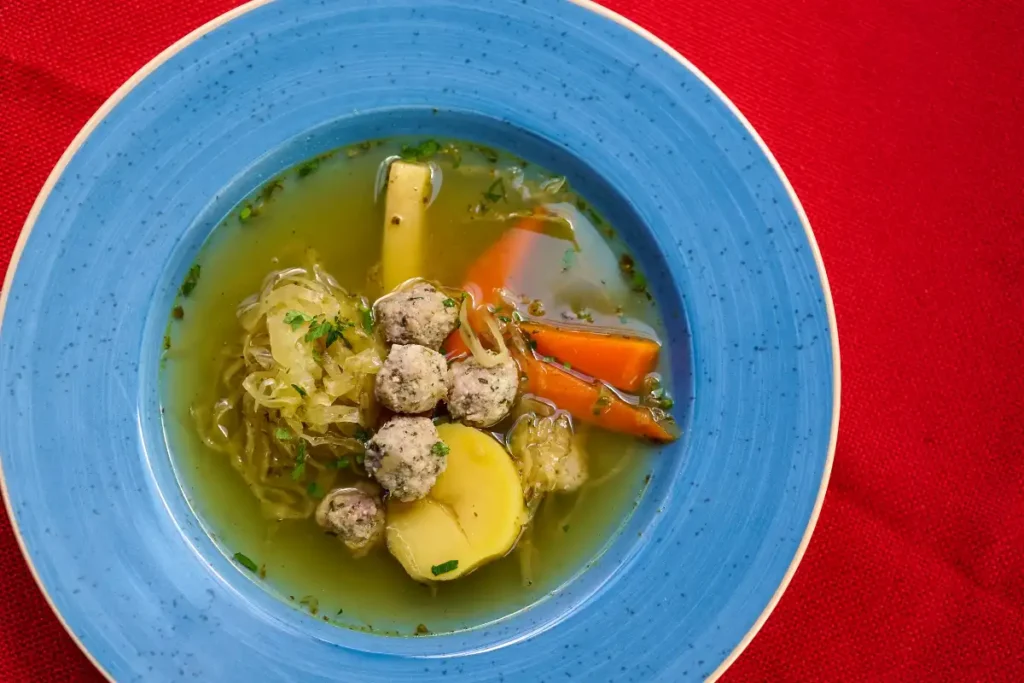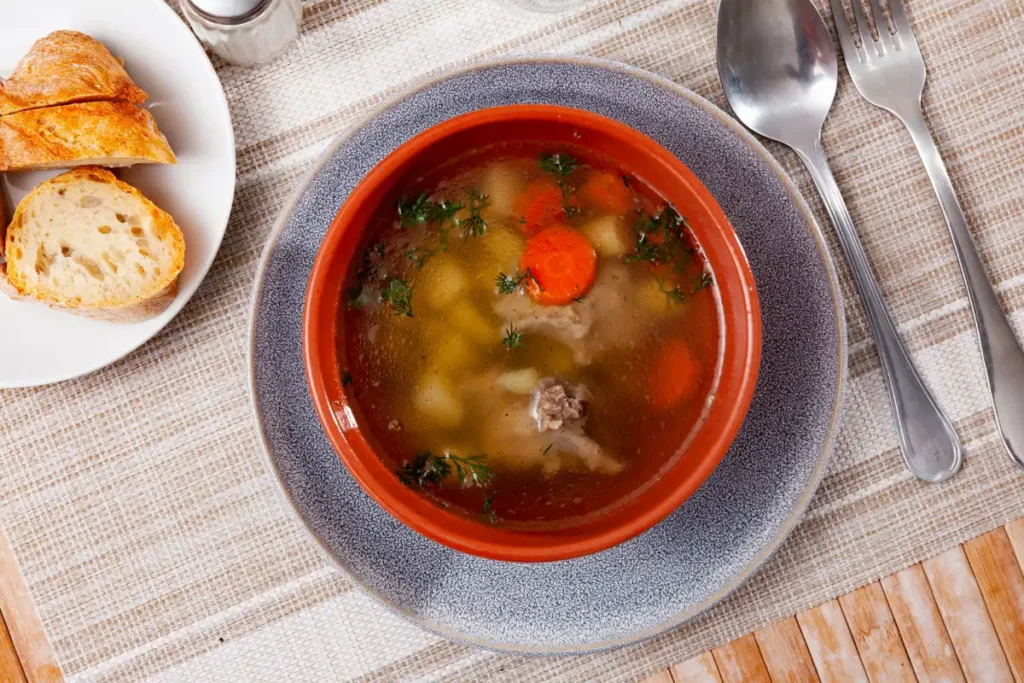
Introduction to Porcupine Soup
Porcupine soup, a dish shrouded in mystery and intrigue, has piqued the curiosity of culinary enthusiasts worldwide. This unique delicacy, often associated with traditional and exotic cuisine, offers a taste experience unlike any other. But what exactly is porcupine soup? Let’s dive into the depths of this rare dish, exploring its origins, preparation methods, and the cultural significance it holds in various communities.
Porcupine soup, as the name suggests, is a soup made from the meat of a porcupine. While it might sound unusual to some, it’s a cherished dish in certain cultures, revered for its distinctive flavor and purported health benefits.
The Cultural Significance of Porcupine Soup
Porcupine soup indeed carries a rich tapestry of cultural significance, seamlessly weaving together an array of stories that encompass survival, tradition, and a deep-rooted culinary heritage. As we delve into this section, we aim to explore the multifaceted historical and cultural aspects of porcupine soup, effectively shedding light on its profound importance across various societies. In doing so, we can also draw parallels with other traditional dishes, such as the lore of loroco in culinary culture or the time-honored techniques behind making perfect pancakes, which similarly reflect the rich culinary traditions of their respective cultures.
Moreover, as we unravel the layers of its cultural fabric, we gain invaluable insights into how people around the globe have interwoven this unique dish with their lives and traditions. This process enriches our understanding and appreciation of its place in the culinary world.
Historical Roots and Cultural Narratives
Porcupine soup’s history is as intriguing as its flavor. In many indigenous cultures, porcupines were hunted not only for their meat but also as a symbol of ingenuity and resilience. The soup made from porcupine meat was often a communal dish, reflecting the spirit of togetherness and survival.
- Symbol of Resilience: In harsh environments where food was scarce, porcupine meat became a crucial source of sustenance, symbolizing the resilience of the people.
- Culinary Tradition: The preparation of porcupine soup is steeped in tradition, with recipes passed down through generations, each adding a layer of depth to the dish’s cultural identity.
Modern-Day Perception and Culinary Renaissance
Today, porcupine soup is undeniably experiencing a renaissance, gracefully transitioning from a mere survival food to an esteemed gourmet delicacy.
As this transformation unfolds, chefs and food enthusiasts are exploring the dish’s potential. They are introducing it creatively to a broader audience. Consequently, this newfound interest captivates many. Individuals everywhere are eager to experience porcupine soup’s unique and distinctive flavors.
- Gourmet Delicacy: In some upscale restaurants, porcupine soup is presented as an exotic delicacy, attracting adventurous diners looking to expand their culinary horizons.
- Cultural Preservation: By incorporating porcupine soup into modern cuisine, chefs are playing a role in preserving and celebrating an integral part of cultural heritage.
Porcupine Soup in Literature and Media
The allure of porcupine soup captivates the realms of literature and media, often portraying it as a symbol of exoticism and adventure.
- Literary References: Some authors use porcupine soup as a metaphor for the exotic, the unknown, or the traditional clashing with the modern.
- Media Spotlight: Documentaries and culinary shows sometimes feature porcupine soup, highlighting its preparation and the stories behind it, thus bringing global attention to this unique dish.

How to Prepare Porcupine Soup
Embarking on the preparation of porcupine soup is a true culinary adventure. It skillfully blends traditional techniques with gastronomic curiosity. Here’s a step-by-step guide to help you create this unique dish. By following these instructions, you ensure a flavorful dish. You also craft a memorable and delightful experience.
Ingredient Selection
The foundation of a great porcupine soup lies in its ingredients. Fresh, high-quality components are essential to bring out the rich flavors of the dish.
- Porcupine Meat: The star of the soup, porcupine meat should be fresh and properly cleaned. It’s known for its tender texture and unique taste.
- Aromatic Vegetables: Onions, carrots, celery, and garlic are commonly used to build a flavorful base for the soup.
- Herbs and Spices: Bay leaves, thyme, rosemary, and other herbs, along with salt and pepper, enhance the soup’s complexity.
Cooking Method
The preparation of porcupine soup is an exercise in patience and precision, ensuring that the meat is tender and the flavors are well-developed.
- Preparing the Meat: Begin by browning the porcupine meat in a large pot to develop flavor. This step is crucial for adding depth to the soup.
- Building the Base: Sauté the aromatic vegetables until they’re soft and fragrant. This creates a flavorful foundation for the soup.
- Simmering: Add water or stock, bringing the mixture to a boil. Reduce the heat and let it simmer, allowing the ingredients to meld together harmoniously.
- Seasoning: Incorporate the herbs and spices, adjusting the seasoning to taste. The right balance of flavors is key to a successful soup.
- Cooking Time: Porcupine meat requires slow cooking to achieve the desired tenderness. The soup should simmer for several hours until the meat is fall-off-the-bone tender.
Serving Suggestions
Presentation and accompaniments can elevate the porcupine soup experience, making it not just a meal but a culinary event.
- Garnishes: Fresh herbs, a dollop of cream, or a sprinkle of freshly ground pepper can add color and flavor to the dish.
- Side Dishes: Serve the soup with rustic bread, a simple salad, or steamed vegetables to complement its hearty nature.
- Presentation: Ladle the soup into warm bowls, ensuring each serving has a generous portion of meat and vegetables.
Tips for Success
- Quality Ingredients: The quality of the meat and vegetables significantly impacts the soup’s flavor, so choose the best available.
- Patience is Key: Allow the soup to simmer slowly to develop a rich and nuanced flavor profile.
- Adjust Seasonings: Taste the soup periodically and adjust the seasonings as needed to achieve a balanced flavor.
By following these steps, you can create a porcupine soup that’s not only a delight to the taste buds but also a nod to the culinary traditions that have cherished this dish for generations. Next, we’ll explore the health benefits and nutritional facts of porcupine soup, shedding light on why this dish is as nourishing as it is flavorful.
Health Benefits and Nutritional Facts

Porcupine soup, beyond its unique taste and cultural significance, offers a range of health benefits and nutritional value. Let’s delve into the components that make this dish not only a culinary delight but also a nutritious choice.
Nutritional Profile of Porcupine Meat
- High in Protein: Porcupine meat is an excellent source of lean protein, essential for muscle growth, repair, and overall body function.
- Low in Fat: Compared to more common meats, porcupine meat is relatively low in fat, making it a healthier option for those monitoring their fat intake.
- Rich in Minerals: It provides essential minerals such as iron, zinc, and phosphorus, which are vital for various bodily functions.
Health Benefits
- Boosts Muscle Health: The high protein content in porcupine soup aids in muscle building and repair, making it a great choice for fitness enthusiasts.
- Supports Immune System: The minerals found in porcupine meat, like zinc and iron, play crucial roles in supporting a healthy immune system.
- Promotes Heart Health: Being low in fat, especially saturated fat, porcupine meat can be a heart-healthy alternative to other red meats.
Dietary Considerations
- Lean Protein Source: For those looking to reduce their red meat consumption without sacrificing protein, porcupine meat offers a lean alternative.
- Low-Fat Diet Friendly: Its low-fat content aligns well with diets aimed at reducing fat intake for health reasons.
Cooking and Nutrient Retention
- Slow Cooking: The slow-cooking process used in making porcupine soup helps in retaining the nutrients of the meat, ensuring that its health benefits are preserved.
- Herbs and Vegetables: The addition of various herbs and vegetables not only enhances the flavor but also contributes vitamins and antioxidants to the dish.
Nutritional Enhancement Tips
- Balanced Meal: Pair the soup with whole grains or vegetables to create a balanced meal that provides a variety of nutrients.
- Mindful Seasoning: While seasoning the soup, consider using herbs and spices that offer health benefits, such as turmeric or garlic, to enhance its nutritional value further.
In summary, porcupine soup is not just a culinary adventure but also a nutritious choice that offers various health benefits. Its unique combination of lean protein, essential minerals, and the potential for added vegetables and herbs makes it a dish worth exploring for those seeking both flavor and nutrition.
FAQs:
How can I make porcupine meatballs with mushroom soup?
- Ingredients:
- Ground porcupine meat (or substitute with beef if unavailable)
- 1/2 cup uncooked rice
- 1/2 cup water
- 1/4 cup finely chopped onion
- Salt and pepper to taste
- 1 can of condensed mushroom soup
- 1 can of water (use the soup can to measure)
- Preparation:
- In a bowl, mix the ground meat, uncooked rice, water, onion, salt, and pepper.
- Form the mixture into meatballs.
- Place the meatballs in a baking dish.
- Cooking:
- In a separate bowl, mix the condensed mushroom soup with one can of water until well blended.
- Pour the soup mixture over the meatballs in the baking dish.
- Cover the dish with foil and bake at 350°F (175°C) for about 1 hour, or until the meatballs are cooked through and the rice is tender.
How do you make porcupine meatballs with tomato soup?
- Ingredients:
- Ground porcupine meat (or substitute with beef if unavailable)
- 1/2 cup uncooked rice
- 1/2 cup water
- 1/4 cup finely chopped onion
- Salt and pepper to taste
- 1 can of condensed tomato soup
- 1 can of water (use the soup can to measure)
- Preparation:
- Combine the ground meat, uncooked rice, water, onion, salt, and pepper in a bowl.
- Shape the mixture into meatballs.
- Arrange the meatballs in a baking dish.
- Cooking:
- Mix the condensed tomato soup with one can of water in a separate bowl.
- Pour this mixture over the meatballs in the baking dish.
- Cover with foil and bake at 350°F (175°C) for about 1 hour or until the meatballs are thoroughly cooked and the rice is soft.

These recipes offer a delightful twist on traditional meatballs, incorporating rice for a unique texture and using soup as a flavorful sauce. Whether you choose mushroom or tomato soup, these porcupine meatballs are sure to be a comforting and tasty dish.
